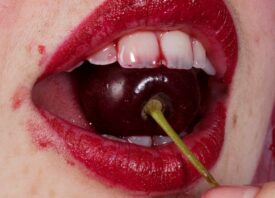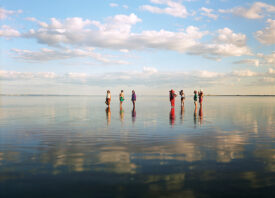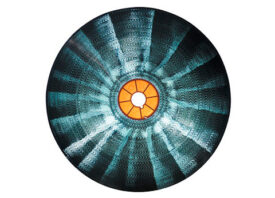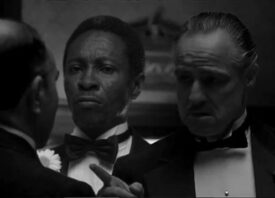Search this site
As We See It: Black Artists Reshaping the Industry

On the cover of As We See It: Artists Redefining Black Identity, the new book by the writer and cultural critic Aida Amoako and Laurence King Publishing, is a photograph by Kenny Germé. Part of a project called The Godfather, the portrait features a child, the Godson, and a young man, the Godfather; both wearing blazers, they represent a legacy, passed on from one generation to the next, from ancestor to descendant.
Their fingers touch. In the Godson, we see the future. In the Godfather, we see the guardian and protector of that future.
But as Amoako writes, the portrait contains another layer of meaning: the Godson wears the Godfather’s blazer, but he hasn’t grown into it yet. The oversized blazer speaks to his potential and his innocence. It also subverts the characterization of young Black boys as “men,” particularly in relation to police brutality cases, where Black boys have historically been mistaken for older than they are, leading to a higher likelihood of violence.
As We See It highlights the contributions of 30 Black artists, many of them photographers, whose work follows and builds upon the legacies of those who came before, including artists like Malick Sidibé, Gordon Parks, and Carrie Mae Weems. In real-time, the book profiles a generation of artists who are laying the foundation for and expanding on the idea of the Black gaze—a point of view as urgent and vital as it is multifaceted and ever-evolving.
Photography as a medium has a complex history of racial bias, with one instance visible in the use of the “Shirley card” in the early days of film. Once used by lab techs for color calibration, the card featured a photo of a white woman, leading to color bias in film processing. It wasn’t until Kodak Gold, introduced in the 1990s, that Kodak started to get more skin tones right.
It’s particularly moving, then, to see photographers like Davey Adesida using Kodak film to authentically capture a range of exquisite skin tones today. In his portrait of Caleb McLaughlin, the Stranger Things star—just sixteen at the time—holds a bouquet of sunshine-bright yellow flowers. His gaze is direct and unwavering, conveying a powerful sense that he is the author of his own image.
Elsewhere in the book are Braylen Dion‘s dreamy, resplendent portraits. In one, the model, Najee, carries a bouquet of lilies, a flower historically featured in religious or mythological portraiture and associated with stories of rebirth or resurrection. In Dion’s picture, Najee looks like a heavenly angel, glowing from within.
As Amoako notes, one thing that helped spark the Black artistic renaissance we’re witnessing right now is the emergence of social media. Platforms like Instagram and Tumblr empowered many photographers and other artists to build networks outside of the traditional “gatekeepers” associated with magazines and exhibitions.
Early in her career, Nadine Ijewere, for example, used Instagram to connect with models and collaborators and create pictures that challenged the restrictive beauty standards long perpetuated in fashion photography. Since then, Ijewere has helped to change the industry from within. In 2019, she became the first woman of color to shoot the cover of British Vogue. Two years later, she became the first Black woman to shoot the cover of American Vogue.
The camera’s role in challenging systemic racism stretches back more than a century. In the 1800s, Frederick Douglass famously used photography to reclaim his story and identity, while also advocating for an equal society. We’re still not there yet, but the work of photographers like those featured in As We See It brings us one step closer. In the future, I know that members of the next generation will not only revisit this book but also expand upon its legacy, repicturing Black identity—through their eyes and on their terms—for many years to come. Get your copy here.









